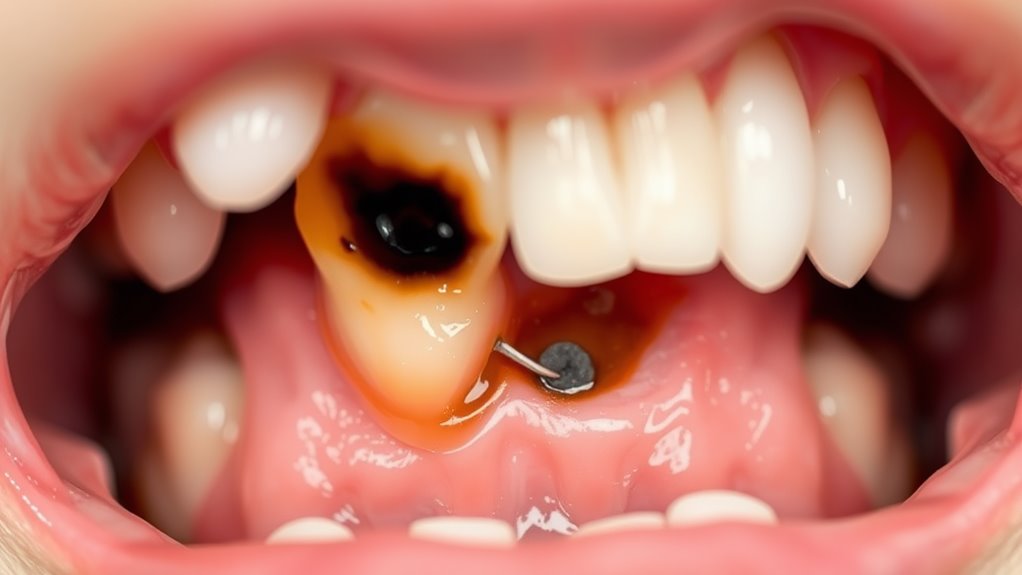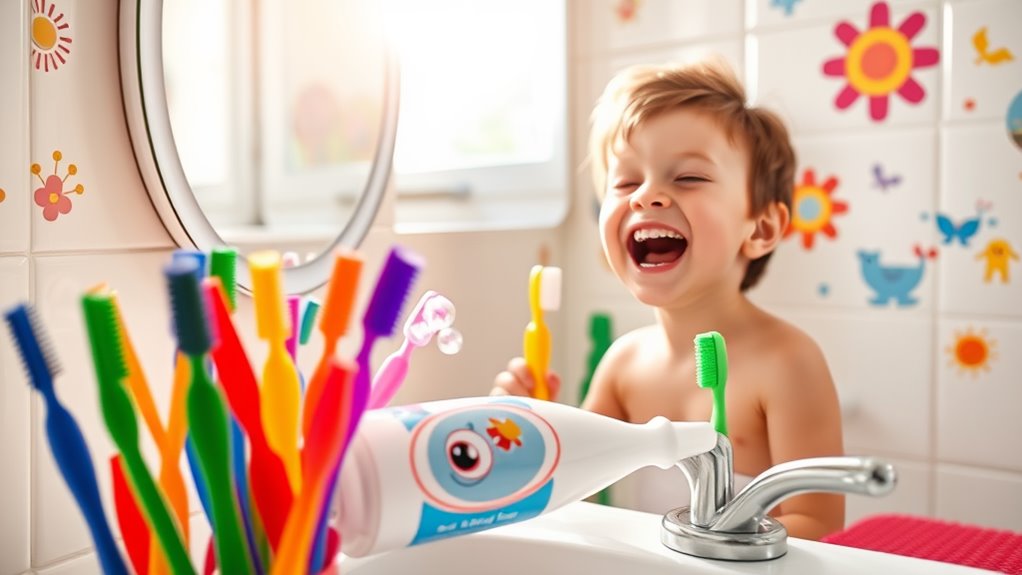Cavities in Baby Teeth. Here’s Why You Shouldn’t Ignore Them!
While your child’s baby teeth will eventually fall out, ignoring cavities can lead to serious problems. Untreated decay can damage developing permanent teeth underneath, cause painful infections, and disrupt proper spacing for adult teeth. Watch for warning signs like white spots, dark patches, or tooth sensitivity. Early prevention and treatment are crucial for your child’s long-term dental health. Discover proven strategies to protect your little one’s smile.
The Role of Baby Teeth in Your Child’s Development
Baby teeth play a crucial role in your child’s development beyond their temporary nature.
These primary teeth help your little one chew properly, speak clearly, and maintain proper spacing for permanent teeth. They also aid in jaw development and facial muscle formation.
Your child’s baby teeth serve as essential guides for permanent teeth, ensuring they emerge in the correct position.
When these temporary teeth are lost too early due to decay, the remaining teeth can shift, leading to alignment issues and the need for future orthodontic treatment.
Additionally, healthy baby teeth contribute to your child’s self-esteem and social confidence, as they enable proper pronunciation and a bright smile.
Common Signs of Cavities in Baby Teeth
How can you spot the early warning signs of tooth decay in your little one’s mouth? Catching cavities early can help prevent pain and more serious dental problems for your child.
While some signs might be challenging to notice at first, knowing what to look for will help you take quick action.
-
White spots or chalky areas on teeth, especially near the gum line, signal the beginning stages of decay.
-
Dark brown or black spots that don’t brush away indicate more advanced cavity formation.
-
Your child’s complaints about tooth sensitivity to hot, cold, or sweet foods suggest potential decay.
-
Visible holes or pits in the teeth, along with persistent bad breath, are clear signs that require immediate dental attention.
How Untreated Baby Tooth Decay Affects Permanent Teeth
While many parents assume baby teeth aren’t crucial since they’ll fall out anyway, untreated decay in primary teeth can significantly impact the development of permanent teeth.
When decay spreads in baby teeth, it can damage the underlying permanent teeth that haven’t yet emerged. The infection can affect the permanent tooth’s enamel formation, leading to weak spots or discoloration.
Untreated cavities in baby teeth can also cause premature loss, which disrupts the spacing for permanent teeth.
When a baby tooth falls out too early, neighboring teeth may shift into the empty space. This movement can block the proper eruption path of permanent teeth, resulting in misalignment or crowding.
You’ll likely need extensive orthodontic treatment to correct these positioning issues, which could have been prevented by treating the initial cavity.
Prevention Strategies to Protect Baby Teeth
To protect your child’s baby teeth from decay, you’ll need a comprehensive preventive approach that starts even before the first tooth emerges. Good oral hygiene habits and proper nutrition during infancy and early childhood can prevent most cavities from developing.
-
Clean your baby’s gums with a soft, damp cloth after feedings, and begin brushing with a tiny smear of fluoride toothpaste as soon as the first tooth appears.
-
Don’t put your baby to bed with a bottle containing milk, juice, or sweetened liquids – only water is safe for nighttime feeding.
-
Schedule your child’s first dental visit by their first birthday or within 6 months of their first tooth.
-
Limit sugary snacks and drinks, and avoid sharing utensils that could transfer cavity-causing bacteria to your child.
Treatment Options for Baby Tooth Cavities
Despite good prevention efforts, some children may still develop cavities in their baby teeth. Your dentist will recommend the most appropriate treatment based on your child’s age, cavity size, and tooth location.
| Treatment Option | Best For | Recovery Time |
|---|---|---|
| Dental Fillings | Small to medium cavities | 24 hours |
| Stainless Steel Crowns | Large cavities or weak teeth | 1-2 days |
| Extraction | Severely damaged teeth | 3-7 days |
If your child’s cavity is small, a simple filling will restore the tooth. For larger cavities, your dentist might suggest a stainless steel crown to protect the remaining tooth structure. In cases where decay has caused significant damage, extraction may be necessary, though this is typically a last resort to prevent infection from spreading.
Creating Healthy Dental Habits Early in Life
Starting healthy dental habits during early childhood provides the foundation for lifelong oral health.
You’ll want to establish a consistent routine that makes dental care fun and engaging for your little one. Teaching proper brushing techniques and making regular dental visits positive experiences will help your child develop confidence in maintaining their oral health.
-
Begin brushing as soon as the first tooth appears, using a rice-sized amount of fluoride toothpaste.
-
Make tooth brushing enjoyable by playing music, using a timer, or turning it into a game.
-
Lead by example – let your child watch you brush and floss your own teeth.
-
Schedule dental check-ups every six months, starting by your child’s first birthday.




